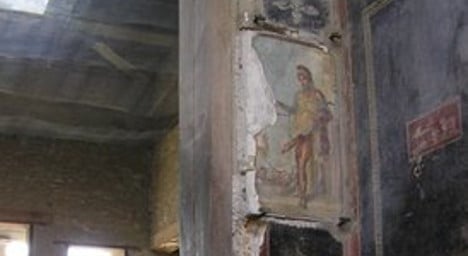The fresco in question is found in the entrance to the House of the Vettii in Pompeii, which survived Mount Vesuvius's eruption in AD 79, and depicts minor Roman god Priapus and his famously large, erect penis.
Priapus was a Roman god of livestock, fruit, plants, gardens and male genitalia.
But according to research by Dr Francesco Galassi, in the fresco, Priapus was suffering from a debilitating condition known as phimosis.
Phimosis is a medical condition where the foreskin fails to retract from the head of the penis, and its depiction in the fresco could suggest it was a problem that blighted the men of ancient Pompeii.
The Vettii fresco is notable because in other surviving depictions of Priapus he is not shown to be suffering from the phimosis.
So why did the artist choose to give him the condition?
Perhaps a prominent member of the Vettii family suffered from the condition and wanted to hide their shame by having Priapus suffer from it too, Galassi said.
“Or it could be that the condition was so widespread that the artist chose to depict it,” he added.
Put like this the evidence seems a little flimsy and anecdotal, but when considered alongside archaeological finds it starts to become more convincing.
In the area around Pompeii a huge number of anatomical votives have been found. These are small penis-shaped objects, made from wood and stone that were believed to ward off evil.
There could be some mileage to the theory.
Jessica Hughes, a classics lecturer at the Open University, told Discovery news: “Anatomical votive offerings made in Italy between the fourth to second centuries B.C. do often show the penis with the foreskin closed around the top, as in the later Priapus painting from Pompeii.”
Perhaps these trinkets were a way for the ancient Romans to ward off even the condition itself, which can be quite debilitating.
“The Romans didn't have the technology to treat it. It is a condition that causes pain, infection and problems during sexual intercourse,” Galassi pointed out.
Today, the problem is easily treated, through steroid creams, stretching techniques or circumcision.
This is by no means the first time scholars have attributed Priapus with physical illnesses. In 2007, an academic writing in BJU International argued that Prapius suffered from Proteus syndrome, otherwise known as gigantism of the penis.



 Please whitelist us to continue reading.
Please whitelist us to continue reading.
Member comments